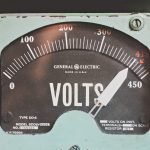
Comcast has agreed to discontinue its “Xfinity 10G Network” brand name following a ruling that deemed the term misleading. The decision, handed down by the National Advertising Review Board (NARB), comes after challenges from industry rivals.
Verizon and T-Mobile both challenged Comcast’s advertising of “10G,” a term cable companies have used since 2019 to refer to potential 10Gbps connections. Those speeds are much faster than what Comcast’s standard cable networks can currently deliver.
Regulators at the advertising industry’s National Advertising Division (NAD) ruled against Comcast in October, but Comcast appealed to NARB. This week, the NARB announced it is upholding the earlier decision that “Comcast should discontinue use of the term 10G, both when used in the name of the service itself (‘Xfinity 10G Network’) as well as when used to describe the Xfinity network.”
Comcast said it strongly disagrees with the ruling but “will discontinue use of the brand name ‘Xfinity 10G Network’ and will not use the term ’10G’ in a manner that misleadingly describes the Xfinity network itself.”
Comcast argued it makes 10Gbps speeds available to 98% of customers upon request. However, those speeds require installation of fibre connections that cost $300 a month, versus standard cable. Regulators said the “recent availability of 10G speeds” for some customers “does not support the superior speed claim (or a 10Gbps claim) for the Xfinity network as a whole.”
The NARB also said “10G” is misleading in comparing cable networks to 5G wireless. “This express claim is not supported because the record does not contain any data comparing speeds experienced by Xfinity network users with speeds experienced by subscribers to 5G networks,” regulators said.
In reality, “10G” is more of an aspirational term about possible future network upgrades rather than current offerings, regulators have noted. Still, Comcast says that while it will stop using “10G” in branding, it reserves the right to use the term “in a manner that does not misleadingly describe the Xfinity network itself.”
For cable customers checking internet speed claims, the takeaway is: ignore “10G” hype in provider marketing and examine your actual purchased speeds. The gap between cable’s branding and reality is often wide.
(Photo by Nick Wright on Unsplash)
See also: AT&T will display brand logos on calls from verified numbers

Looking to revamp your digital transformation strategy? Learn more about Digital Transformation Week taking place in Amsterdam, California, and London. The comprehensive event is co-located with Cyber Security & Cloud Expo.
Explore other upcoming enterprise technology events and webinars powered by TechForge here.





